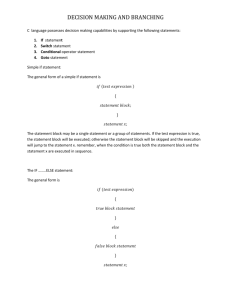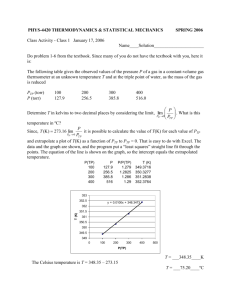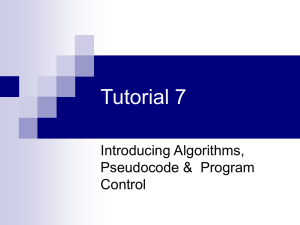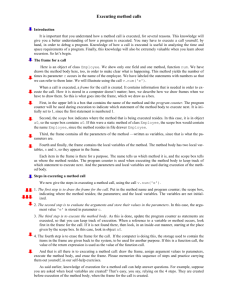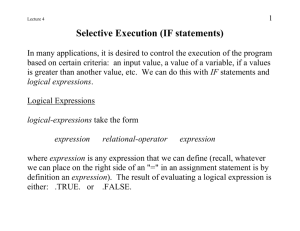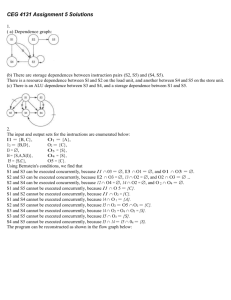Test Execution
advertisement
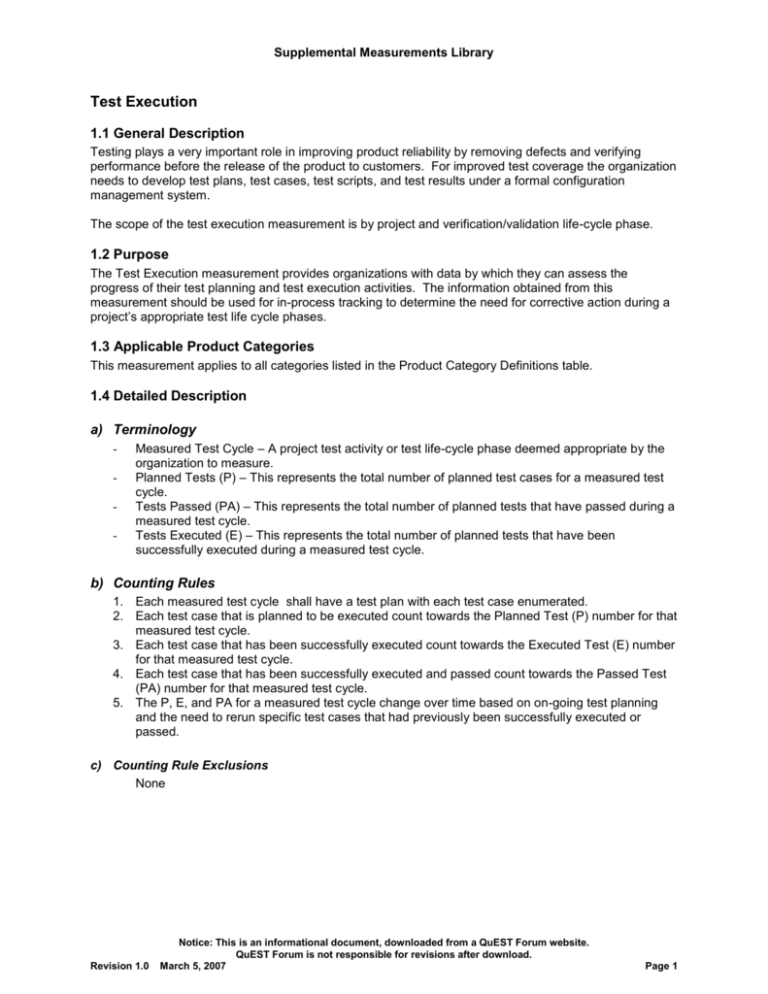
Supplemental Measurements Library Test Execution 1.1 General Description Testing plays a very important role in improving product reliability by removing defects and verifying performance before the release of the product to customers. For improved test coverage the organization needs to develop test plans, test cases, test scripts, and test results under a formal configuration management system. The scope of the test execution measurement is by project and verification/validation life-cycle phase. 1.2 Purpose The Test Execution measurement provides organizations with data by which they can assess the progress of their test planning and test execution activities. The information obtained from this measurement should be used for in-process tracking to determine the need for corrective action during a project’s appropriate test life cycle phases. 1.3 Applicable Product Categories This measurement applies to all categories listed in the Product Category Definitions table. 1.4 Detailed Description a) Terminology - Measured Test Cycle – A project test activity or test life-cycle phase deemed appropriate by the organization to measure. Planned Tests (P) – This represents the total number of planned test cases for a measured test cycle. Tests Passed (PA) – This represents the total number of planned tests that have passed during a measured test cycle. Tests Executed (E) – This represents the total number of planned tests that have been successfully executed during a measured test cycle. b) Counting Rules 1. Each measured test cycle shall have a test plan with each test case enumerated. 2. Each test case that is planned to be executed count towards the Planned Test (P) number for that measured test cycle. 3. Each test case that has been successfully executed count towards the Executed Test (E) number for that measured test cycle. 4. Each test case that has been successfully executed and passed count towards the Passed Test (PA) number for that measured test cycle. 5. The P, E, and PA for a measured test cycle change over time based on on-going test planning and the need to rerun specific test cases that had previously been successfully executed or passed. c) Counting Rule Exclusions None Revision 1.0 Notice: This is an informational document, downloaded from a QuEST Forum website. QuEST Forum is not responsible for revisions after download. March 5, 2007 Page 1 Supplemental Measurements Library d) Calculations and Formulas 1. Percentage of Planned Tests Executed (PTE) should be calculated as follows: PTE = (E/P) x 100% 2. Percentage of Planned Tests Passed (PTP) should be calculated as follows: PTP = (PA/P) x 100% 3. Percentage Yield of Executed Tests (YET) should be calculated as follows: YET = (PA/E) x 100% e) Reporting and Data Format 1. Data should be collected periodically during the product development process. The measurement period shall be documented in the appropriate product development release plan. 1.5 Sample Chart Test Execution Measurement Example 100% 90% 80% 70% 60% PTE 50% PTP YET 40% 30% 20% 10% 0% 1 2 3 4 5 6 7 8 9 8 90% 80% 89% 9 95% 90% 95% 10 Measurement Period PTE PTP YET Revision 1.0 1 5% 3% 60% 2 20% 10% 50% 3 25% 20% 80% Measurement Period 4 5 6 7 35% 50% 70% 84% 25% 40% 65% 70% 71% 80% 95% 83% 10 98% 95% 97% Notice: This is an informational document, downloaded from a QuEST Forum website. QuEST Forum is not responsible for revisions after download. March 5, 2007 Page 2

